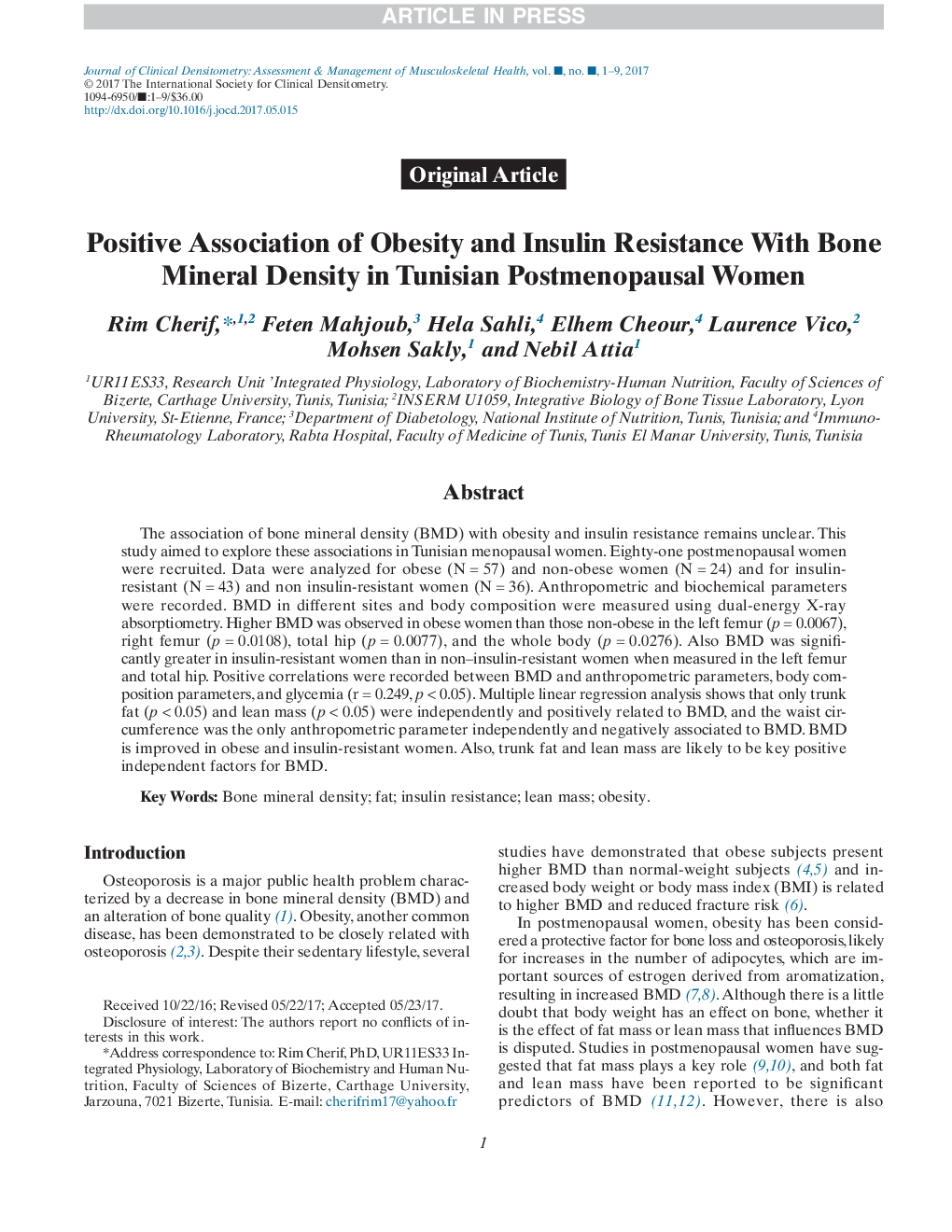| Article ID | Journal | Published Year | Pages | File Type |
|---|---|---|---|---|
| 8722912 | Journal of Clinical Densitometry | 2018 | 9 Pages |
Abstract
The association of bone mineral density (BMD) with obesity and insulin resistance remains unclear. This study aimed to explore these associations in Tunisian menopausal women. Eighty-one postmenopausal women were recruited. Data were analyzed for obese (Nâ=â57) and non-obese women (Nâ=â24) and for insulin-resistant (Nâ=â43) and non insulin-resistant women (Nâ=â36). Anthropometric and biochemical parameters were recorded. BMD in different sites and body composition were measured using dual-energy X-ray absorptiometry. Higher BMD was observed in obese women than those non-obese in the left femur (pâ=â0.0067), right femur (pâ=â0.0108), total hip (pâ=â0.0077), and the whole body (pâ=â0.0276). Also BMD was significantly greater in insulin-resistant women than in non-insulin-resistant women when measured in the left femur and total hip. Positive correlations were recorded between BMD and anthropometric parameters, body composition parameters, and glycemia (râ=â0.249, pâ<â0.05). Multiple linear regression analysis shows that only trunk fat (pâ<â0.05) and lean mass (pâ<â0.05) were independently and positively related to BMD, and the waist circumference was the only anthropometric parameter independently and negatively associated to BMD. BMD is improved in obese and insulin-resistant women. Also, trunk fat and lean mass are likely to be key positive independent factors for BMD.
Related Topics
Health Sciences
Medicine and Dentistry
Endocrinology, Diabetes and Metabolism
Authors
Rim Cherif, Feten Mahjoub, Hela Sahli, Elhem Cheour, Laurence Vico, Mohsen Sakly, Nebil Attia,
